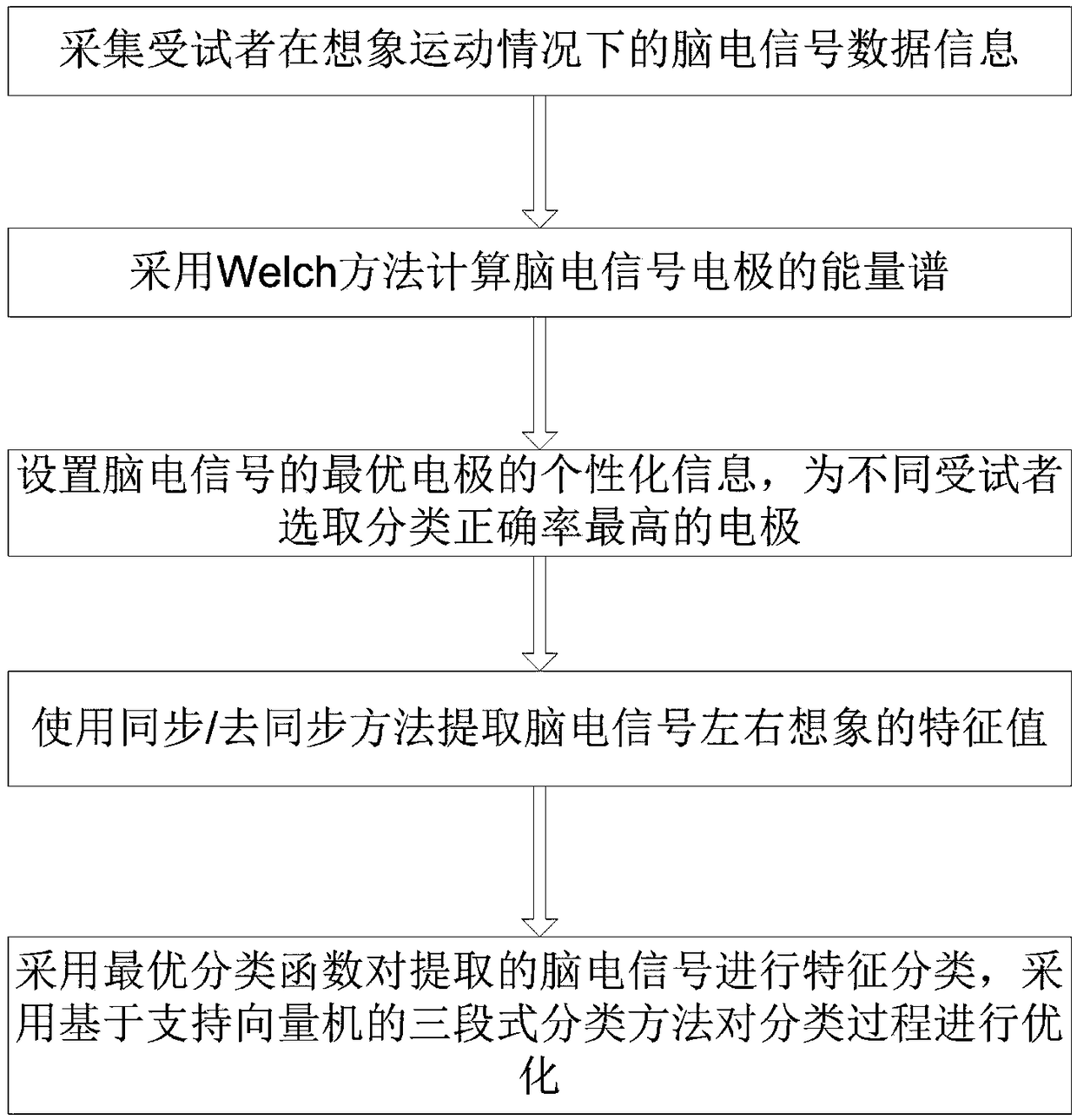Electroencephalogram signal feature recognition method under motor imagery state
An EEG signal and motor imagery technology, applied in the field of signal processing, can solve the problems of being easily disturbed by the outside world, easily affected by the environment and emotions, and unable to realize the personalization and precision of electrode positions.
- Summary
- Abstract
- Description
- Claims
- Application Information
AI Technical Summary
Problems solved by technology
Method used
Image
Examples
Embodiment Construction
[0042] In order to make the technical solutions and advantages of the present invention more clear, the technical solutions in the embodiments of the present invention are clearly and completely described below in conjunction with the drawings in the embodiments of the present invention:
[0043] Such as figure 1 A method for identifying features of EEG signals in a state of motor imagery as shown, specifically includes the following steps:
[0044] S1: Collect the EEG signal data information of the subject under the condition of imaginary movement.
[0045] S2: Using the Welch method to calculate the energy spectrum of the EEG signal electrodes.
[0046] Assuming that the total length of the time series signal F(n) of the EEG signal is N, the time series signal is divided into L segments, each segment length is M, and some data overlap between each segment, if 1 / 3 of the data overlap, then:
[0047]
[0048] Add the window function ω(n) to each data segment, and the aver...
PUM
 Login to View More
Login to View More Abstract
Description
Claims
Application Information
 Login to View More
Login to View More - R&D
- Intellectual Property
- Life Sciences
- Materials
- Tech Scout
- Unparalleled Data Quality
- Higher Quality Content
- 60% Fewer Hallucinations
Browse by: Latest US Patents, China's latest patents, Technical Efficacy Thesaurus, Application Domain, Technology Topic, Popular Technical Reports.
© 2025 PatSnap. All rights reserved.Legal|Privacy policy|Modern Slavery Act Transparency Statement|Sitemap|About US| Contact US: help@patsnap.com



